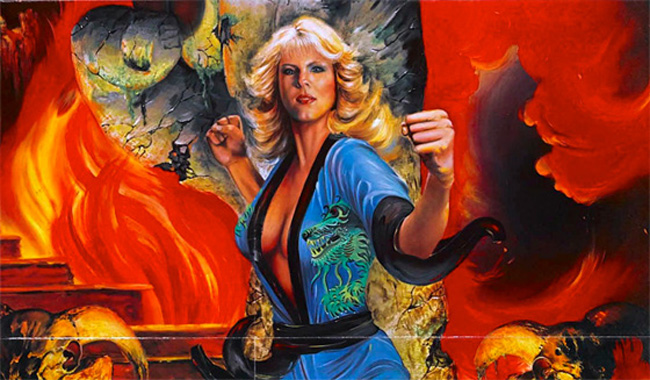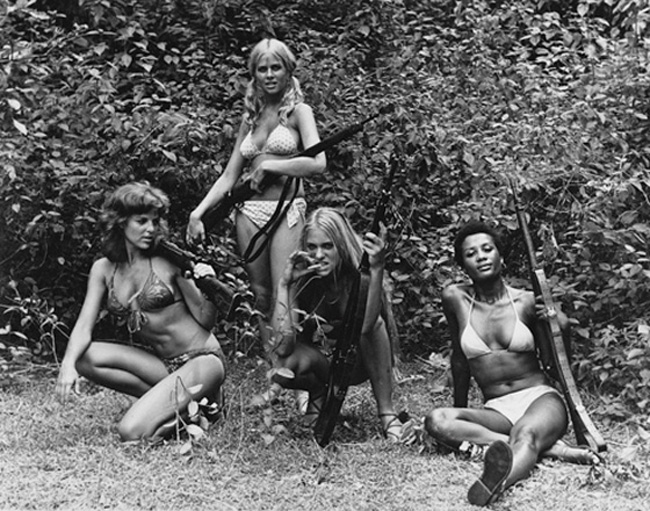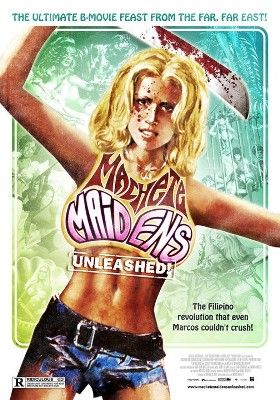
As the most telling quote of Machete Maidens Unleashed! exclaims, “The stories are 10 times better than the actual films”. The anecdotes and memories of those involved in the Filipino exploitation genre of cinema are an amazing account of a period never to be repeated. Screening at the New York Asian Film Festival, Mark Hartley’s documentary opens our eyes to what went on in order to make some of the infamous cult schlock from the 1970s. Starting with Hemisphere Pictures and continuing into Roger Corman’s shingle, New World Pictures, the Philippines are shown as the jungle haven chock full of cheap production and expendable stunt men it was. We become privy to tales of directors, producers, and actors involved as well as a bevy of clips from their films to understand how the three B’s—blood, breasts, and beasts—created a sensation at American drive-ins across the nation. Everyone knew the work was subpar, but as Corman relates, despite his dislike of films like The Big Doll House, once he saw the ratio of cost to return, “all scruples faded away—let’s make another.”
The country, controlled by the Marcos dictatorship after the 1972 declaration of martial law, was somewhat of an aberration during this hectic climate of revolutionary wars. Nations generally had a poor view of America, but the Philippines never forgot our assistance in liberating them from Japanese rule. As a result, while the military controlled the media, these US film productions were allowed to remain autonomous, even employing many Filipino workers whose work would be illegal if they were on their own. The conditions were less than less than desirable—actress dressing rooms were caves that doubled as the men’s latrine, stunt men died, and pyrotechnic professionals lost fingers—so the talent coming over was never A-list. But while the work was hard, often demeaning, and not bothered to be screened by the MPAA, boundaries were pushed and codes of decency shattered as many newcomers cut their teeth in the jungle. Pam Grier’s exploitative run of empowered women began with The Big Doll House, cult figure Sid Haig starred in more than a few, and directors like Joe Dante and Jonathan Demme came of age.
Bookended by old-school drive-in adverts, the feel of Machete Maidens is one of fun nostalgia, a look into the past at a period forgotten and/or unknown. Homegrown directors like Eddie Romero, a man who disavowed this period of work after it never lived up to his desires and an inspiration for the likes of Quentin Tarantino; Cirio Santiago, a man who truly believed he was making great art; and Bobby A. Suarez, his confounding plots hard to access, crosscut with the likes of Americans Corman, Jack Hill, and Joe Viola, sharing recollections of their horror, ‘women in prison’, black soldiers of fortune, and karate action hybrids. Each created what the public desired—sex, violence, and gore—whether they liked the scripts or not. It was more a matter of churning them out than making them good, the marketing wizards tasked to make these exports palatable by creating audience participatory gimmicks like green blood and replica wedding rings, a warning bell to sound when the faint of heart should cover their eyes, and trailers oftentimes more entertaining than the final product, infused with tagline innuendo and archived footage of exploding helicopters.

We learn how Jaws in 1975 really signaled the end of Filipino exploitation; its success and quality making Corman realize his gravy train was in trouble. Attempting to cash in on the concept, they began mimicking it with Pirahna and Up from the Depths, but by that time and especially into the 80s, drive-ins began to shutter and the realization you could see Star Wars for the same price as The Hot Box changed how audiences spent their money. But the movement was still an important cog in cinema history, paving the way for graphic violence on film; the destruction of gender and race barriers as women, namely black women, became action stars; and more culturally specific influences such as Filipino First Lady Imelda Marcos beginning the country’s local film festival. Even though most women involved were used as sex symbols—naked, tortured, and raped—they maintain it was one more step on the path towards feminist power. Here they were allowed to go topless, they were allowed to show their bodies because they wanted to. The truth of this or whether it’s a bit of over-intellectualizing for the sake of sanity could be the subject of its own film.
Full of fascinating soundbytes—how about R. Lee Ermey criticizing Apocalypse Now and how it ‘was nothing like Vietnam [and] made [veterans] look like a joke’—critical insight, historical relevance, and even ‘genre specialist’ John Landis to expound on his insight watching from the multiplexes, Machete Maidens Unleashed! is a quality document of a subject you never thought you cared to know. Even the film’s director, Hartley, was initially going to decline his invitation to come aboard as its original subject, Filipino action star Weng Weng—the midget James Bond dubbed comically by Dick Randall—was too obscure to dive into. But his research and eventual excitement in how expansive the cinematic influences of Roger Corman and company’s jungle experiment was became too much to dismiss. What better way is there to be introduced to the likes of Cleopatra Wong, T.N.T. Jackson, a brief foray into ‘PG family fare’ that was anything but with Beyond Atlantis, and Hollywood Boulevard, created from existing material reappropriated and spliced with new footage, then by their creators? This film is a testament to the memory of a microcosm of cinema, a time of complete autonomy and freedom many aspire to reinvent, that will never be seen again.
Machete Maidens Unleashed! is screening at the New York Asian Film Festival.

